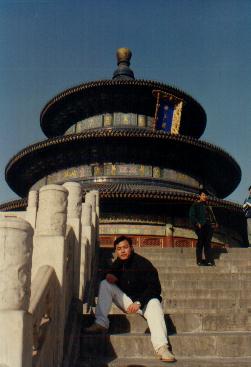Lonely Planet - Travel to Beijing
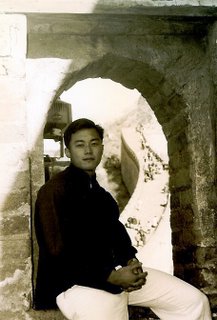

If You Are In Beijing
If your visions of Beijing are centred around pods of Maoist revolutionaries in buttoned-down tunics performing exercise in Tiananmen Square, put them to rest: this city has embarked on a new millennium rollercoaster and it's taking the rest of China with it.
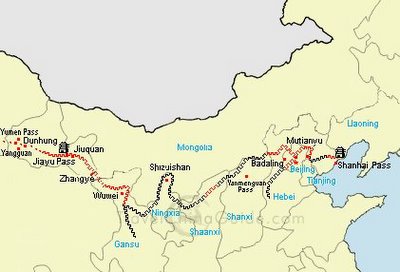 Famed for its sheer size, the ancient and magnificent fortification known the world over as The Great Wall, with its several branches, runs about 4,500 miles (7,300 km) from east to west through northern China. From Shanhaiguan Pass to Jiayuguan Pass, the Wall snakes across ridges and deserts via Liaoning, Hebei, Tianjin, Beijing, Shanxi, Inner Mongolia, Shaanxi, Ningxia and finally ends in Gansu. The mighty presence of the Great Wall stands as a witness of the country's enthralling history.
Famed for its sheer size, the ancient and magnificent fortification known the world over as The Great Wall, with its several branches, runs about 4,500 miles (7,300 km) from east to west through northern China. From Shanhaiguan Pass to Jiayuguan Pass, the Wall snakes across ridges and deserts via Liaoning, Hebei, Tianjin, Beijing, Shanxi, Inner Mongolia, Shaanxi, Ningxia and finally ends in Gansu. The mighty presence of the Great Wall stands as a witness of the country's enthralling history.
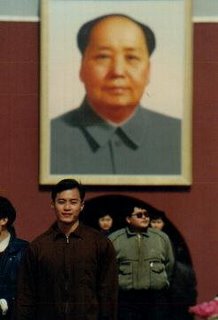 Today's youth are more interested in MTV than Mao, rhetorical slogans from the Cultural Revolution have given way to butchered English splashed across designer-copy T-shirts, and expats, tourists, foreign investors and a mobile phone-toting hip-oisie are mixing it up with the bureaucrats.
Today's youth are more interested in MTV than Mao, rhetorical slogans from the Cultural Revolution have given way to butchered English splashed across designer-copy T-shirts, and expats, tourists, foreign investors and a mobile phone-toting hip-oisie are mixing it up with the bureaucrats.
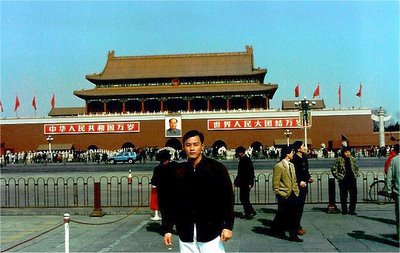
 More park than temple and fairly overrun with tour groups, the Temple of Heaven (Tiantan) is well worth a visit for its exceptional Ming buildings. This sight has become a symbol of Beijing, decorating tourist literature and loaning its name to products ranging from tiger balm to plumbing fixtures.
More park than temple and fairly overrun with tour groups, the Temple of Heaven (Tiantan) is well worth a visit for its exceptional Ming buildings. This sight has become a symbol of Beijing, decorating tourist literature and loaning its name to products ranging from tiger balm to plumbing fixtures. The temple was built in 1420 as a vast stage for the solemn rites performed by the Son of Heaven (aka Emperor), who came here to pray for good harvests, to seek divine approval and to atone for the sins of the people. Similar ceremonies were performed as early as 2600BC and remained an important part of imperial life through to the early 20th century.
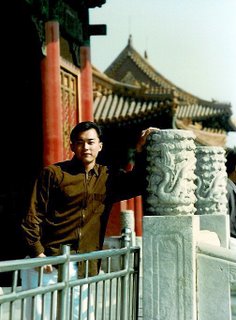 The spinsterish Beijing of old is having a facelift and the cityscape is changing daily. Within the city, however, you'll still find some of China's most stunning sights: the Forbidden City, the Summer Palace, Temple of Heaven Park, the Lama Temple and the Great Wall, to name just a few.
The spinsterish Beijing of old is having a facelift and the cityscape is changing daily. Within the city, however, you'll still find some of China's most stunning sights: the Forbidden City, the Summer Palace, Temple of Heaven Park, the Lama Temple and the Great Wall, to name just a few.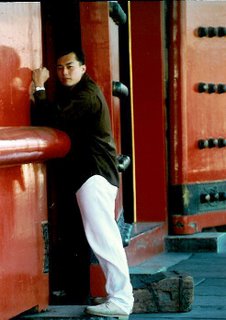
Also known as the Imperial Palace Museum or Gugong, the Forbidden City was the place where the emperors of the Ming and Qing Dynasties carried out their administration and lived. Now it is open to the public as a palace museum where people can see the great traditional palace architecture, enjoy the treasures kept in the palace, and learn of the legends and anecdotes about the imperial family and the court.
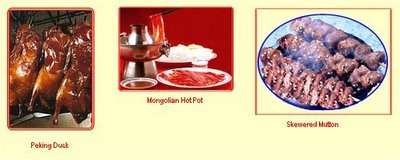 Beijing food or Northern food is a combination of different areas varieties namely Hebei, Shangdong, Lower Yangzi River area, Inner Mongolia and Xinjiang. Peking Duck, Mongolian Hot Pot with Lamb or Beef, Sauteed Mutton with Scallion, Muslim Skewered Mutton, Shandong Chicken with Abalone and Cabbage, to mention but a few of Beijing famous dishes. In order to enjoy tasting all this cuisines of Beijing, learning to use the chopsticks might bright out more taste and flovour.
Beijing food or Northern food is a combination of different areas varieties namely Hebei, Shangdong, Lower Yangzi River area, Inner Mongolia and Xinjiang. Peking Duck, Mongolian Hot Pot with Lamb or Beef, Sauteed Mutton with Scallion, Muslim Skewered Mutton, Shandong Chicken with Abalone and Cabbage, to mention but a few of Beijing famous dishes. In order to enjoy tasting all this cuisines of Beijing, learning to use the chopsticks might bright out more taste and flovour.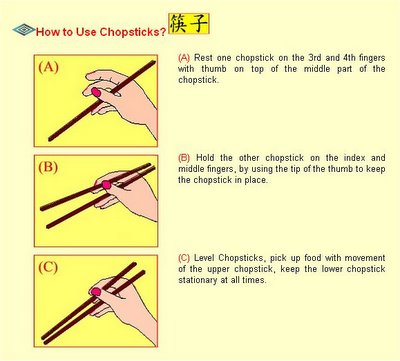
Beijing is definitely a great place to see, a city fills with lots of histories, food and beautiful experiences.
A link for everyone to learn about Chinese Cuisines - http://www.west-meet-east.com/food.htm
Lonely Planet Website http://www.lonelyplanet.com/ is a source of information you can get and prepare yourself before you go.
Great Travel, Sean!
